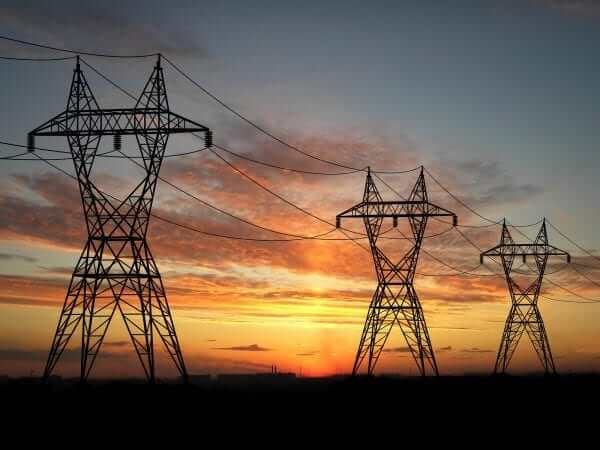
Employee engagement is an issue for many industries that rely on frontline workers. But energy and utility companies face unique challenges when it comes to connecting with workers. A widening skills gap and a growing labor shortage are adding up to a disconnected workforce.
In fact, only 52% of utility employees are engaged at work.
Job security is another contributing factor. From plummeting barrel prices to COVID-19, the last decade has forced dramatic reductions in the workforce. According to Deloitte, oil and gas companies have lost over 107,000 jobs during COVID-19. That instability is mirrored internally with a disengaged workforce.
It’s well-documented that the level of employee engagement in an organization directly impacts business outcomes.
- Engaged employees are often self-starters, resulting in greater productivity.
- A high-performing workforce improves overall efficiency and boosts the bottom line.
- Engagement reduces the risk of accidents, which is important in an industry with many safety hazards.
Fortunately, low employee engagement can be remedied. Digital collaboration tools enable companies to focus on direct, transparent communication that keeps their employees connected, safe and supported.
For energy and utility companies that depend on distributed field teams, leaders must be sure to complement digital tools with:
- Mobile-first communications: Frontline workers usually do not have access to a company email, but most have smartphones. A mobile workforce app, like Beekeeper, delivers information straight to your field workers, giving them access to health and safety guidelines, shift schedules, payroll stubs, SOPs, and other documents to keep them informed.
- Multiple communication touchpoints: Supervisors should take an omnichannel approach to communication with frontline workers. This should include sending push notifications through their workforce app, posting flyers in strategic locations around the workplace, and verbally communicating with field teams through regular standup meetings.
Here are four ways that digital communication can help companies build a safe work environment and cultivate a thriving workforce.
Two-Way Communication Forges Connections with the Frontline
Communicating with field workers is challenging. It is part of the reason that frontline employees have lower engagement rates. A mobile-first communication platform creates a two-way line of communication between the office and field teams.
These platforms offer utilities companies a two-way communication channel that allows field teams to be part of the dialogue. Through pulse surveys and direct messages, employees can share their experience, insights and ideas to contribute and collaborate. Having the opportunity to provide feedback makes field teams more engaged with the broader organization.
At Varo Energy, Beekeeper’s mobile platform connects and engages employees across Europe. Leaders engage teams from the bottom up, encouraging workers to submit innovative ideas for the oil company. They have dedicated streams (similar to newsfeeds) for both business and non-business communication. They build a connection between frontline workers and the main office with communication campaigns directly from the CEO. With COVID-19 check-in surveys and communication around procedures, Varo uses their mobile-first tool to ensure the safety of its entire workforce.
Eighty-seven percent of digitally-supported workers are more engaged and happier in their work. That comes from being connected and feeling valued. Strategic communication strategies help facilitate this process. For example, employee recognition can boost engagement with a simple shout out to workers in the field who go above and beyond their daily duties.
A Digitally-Enabled Workforce Attracts Talent
By 2026, technology investments across the utilities industry will reach $35 billion. This is a move in the right direction for an industry plagued by a shrinking labor pool. Almost half of the oil and gas workforce is closer to retirement age, and so far, there is not a steady stream of skilled talent lining up to take their place.
Companies should consider distributing their investments to build a diverse technology stack. While automation, smart machines and robots create leaner, more efficient field operations, communication tools are an essential part of the equation and can help industry leaders rebuild their workforces and attract the next generation of utilities workers.
Millennials are now the majority of the workforce, and they want technology to communicate at work. With the growing popularity of STEM subjects (Science, Technology, Engineering, and Mathematics) in today’s educational institutions, one study has shown that 44% of millennials are interested in oil and gas careers. Companies should build on that momentum with communication tools that will attract new talent.
Boost Engagement By Upskilling Your Workforce
As energy companies invest in Industry 4.0 technology, the nature of fieldwork is evolving. Now, in addition to a labor shortage, companies are also facing a skills gap due to the roles they need to complement a digital landscape.
The oil and gas industry will need to fill technical positions like data analysts, IT technicians, and remote equipment operators. The industry cannot afford to lose more workers, so leaders should prioritize upskilling their current workforces. They can create training content and distribute it over a mobile app so workers can easily learn the skills they need.
Creating opportunities for professional growth motivates employees and grows engagement as a result. Leaders can further support this engagement by promoting employees from within and showing workers they can move up within the organization.
Engaged Workers Create a Safer Workplace
Because of tight deadlines, heavy equipment, and explosive resources, the fatality rate in oil and gas is four times the national average. Industry leaders are constantly searching for a way to improve safety for employees, and real-time, mobile communication can help. First, a workforce app can boost engagement, which results in 70% fewer safety incidents.
Also:
- Workers can immediately message their peers and supervisors to alert them of hazards in the field.
- Frontline workers can swap shifts with each other to avoid working while tired and risk losing focus.
- As Industry 4.0 automates energy operations, a mobile tool can connect workers to the network, allowing them to work at a distance, away from heavy equipment and hazards.
- Safety documents can be stored in the cloud and accessed by every worker through
their workforce app for fast emergency response.
- During a crisis, like COVID-19, companies can update workers on new protocols and
public health guidelines.
For nearly two centuries, refineries have been employing workers. It’s time for oil and gas companies to stop the downward trend and build an engaged, growing workforce with digital tools for the 21st-century worker.
About the Author: Cristian Grossman is CEO and Co-Founder of Beekeeper, a secure, mobile-first operational communications platform for frontline teams. Beekeeper helps companies connect their distributed workforces to increase productivity and employee engagement. Prior to founding Beekeeper, Cristian worked for Accenture on high profile international projects in IT Strategy for the financial and public sectors. Cristian studied Chemical Engineering and got his Ph.D. in Electrical Engineering, both at ETH Zurich. Before moving to beautiful Zurich, Cristian was born and raised in an entrepreneurial Swiss-Mexican family in Mexico City.














